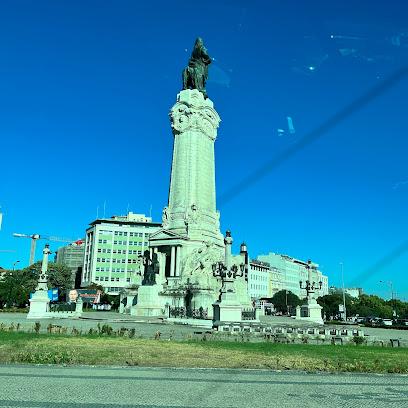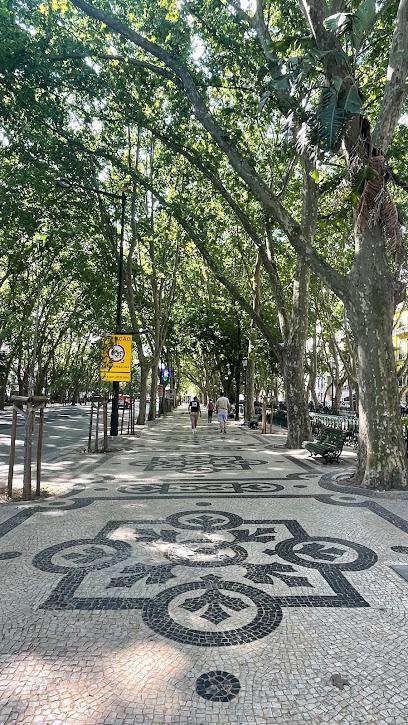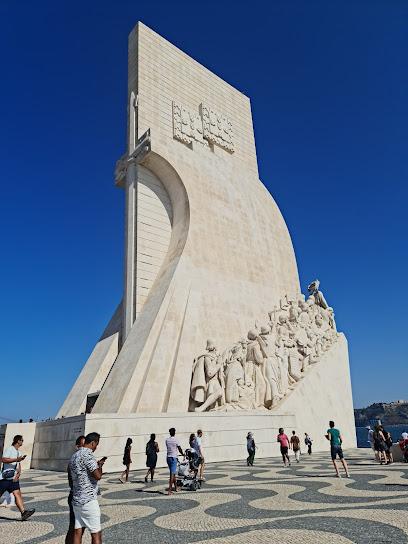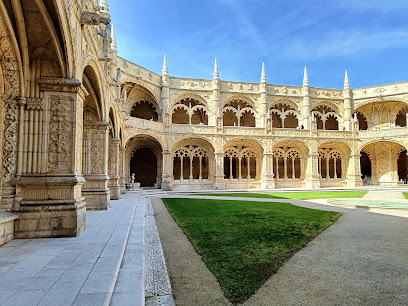Private Tour to Cosmopolitan Lisbon Past and Present
Highlights
- Personal accompaniment during the whole day
- Private transportation with driver/guide
- Visit the most important sights in Lisbon
- Stroll through historic districts with guide
- Experience History, Light, Colors, and Flavors
-
Private Tour
-
Duration 8 hours
-
Includes hotel pickup/drop-off
-
Driver/Guide included
-
Bottled water provided
-
WiFi on board
Experience the best of cosmopolitan Lisbon on this private tour that takes you through the city's rich history and vibrant present. Your knowledgeable guide will pick you up from your hotel in a comfortable vehicle, ensuring your comfort and safety throughout the day. As you explore Lisbon's historic districts, you'll be immersed in its unique culture, architecture, and gastronomy. From the monumental viewpoint of Parque Eduardo VII, where you can marvel at the city's panoramic views, to the historic squares of Praca Marques do Pombal and Praca dos Restauradores, you'll discover the heart and soul of Lisbon. Take a stroll through the elegant Avenida da Liberdade, known as Portugal's Champs-Elysées, and explore the iconic Alfama neighborhood with its stunning Portas do Sol viewpoint. The tour also includes a visit to the modern Parque das Nacoes, home to the Lisbon Oceanarium and the Vasco da Gama Bridge. Finally, don't miss the chance to see the famous Belem Tower and enjoy a tasting of the original Pastéis de Belém. This exclusive tour offers a truly unforgettable experience of Lisbon's history, beauty, and flavors.
At a Glance
-
Free cancellation
-
8 hours
-
Instant Confirmation
-
Available in German, Portuguese, English
-
Wheelchair accessible
-
Mobile voucher
-
Private Tour
-
Guided
-
Family friendly
Featured Reviews
Explore the vibrant history and culture of Lisbon with a private, guided tour showcasing the city's iconic landmarks and local flavors.
Included
-
In-vehicle air conditioning
-
Bottled water
-
Driver/Guide
-
Pickup and drop-off at hotel/accommodation in Lisbon
-
On-board wifi
-
Personal accompaniment during the whole day
-
Private transportation
Excluded
-
Entrance tickets to monuments
-
Any additional expenses not covered and agreed in advance
-
Lunch
Pickup
Check if pick-up is available from your location, you will select during checkout (providers may allow other pickup locations)
What to expect

Pick-up from your hotel / accommodation in Lisbon Do not worry about traveling by public transport or sharing your tour and choose comfort and safety in the company of your guide who will pick you up at your hotel in a comfortable vehicle with the Clean & Safe seal guarantee assigned by the Portuguese Tourism Board. This tour is designed for those who want to get away from the traditional tours and have a more authentic and unique experience.
Parque Eduardo VII
Start your Sightseeing-Day at the most monumental viewpoint in Lisbon at the top of Parque Eduardo VII. We can say that this is Lisbon's balcony! From here you can see the hills of "The city of the 7 hills" as Lisbon is also known. Look to your left and notice that on top of one of the hills lies the imposing São Jorge Castle. Ahead of you is the beautiful Parque Eduardo VII, but the best is yet to come, look ahead and contemplate the imposing statue of Marques de Pombal, Liberdade Avenue and, further on, the Tagus River. On good days you can see on the other side of the river - on the south coast, the Arrabida Mountains. It is also here that you can find the monument that pays tribute to the 25th of April, the Carnation Revolution - which took place on the 25th of April 1974 - and a huge national flag with 240 square meters hoisted 35-meter mast.

Located next to the Parque Eduardo VII and in front of Liberdade Avenue, Marquês de Pombal Square is one of the most notable and historic squares in Lisbon. As if it is the heart of Lisbon, this is where demonstrations against or in favor of the government converge and celebrations of great victories, whether in politics or sports, especially in football. In the center of the square there is a monument built in honor of the politician Sebastião José de Carvalho Melo, the Marquês de Pombal, a statesman who had a fundamental role in the reconstruction of Lisbon after the Great Earthquake of 1755. The statue is full of symbology such as the Lion that is next to the figure of Marquês de Pombal that represents strength, determination, and Royalty, the Minerva Statue that represents the remodeling of university education, the Bow of a Ship that represents the renovation of the Merchant Navy, the female figure looking at Liberdade Avenue that represents Reconstructed Lisbon.

Passing by Liberdade Avenue One of the main and, we can say, the most luxurious, elegant, and beautiful avenues in Lisbon. Connects the Restauradores Square to the Marquês de Pombal Square. Considered the Champs-Elysées of Portugal. Along the avenue, you will see famous brand stores, the large sidewalks decorated with gardens, statues and kiosks. Even the floor is beautiful, as it is made with cobblestones with designs like geometric or figurative motifs - the traditional Calçada Portuguesas (Portuguese sidewalk).
Praca Dos Restauradores
Passing by Restauradores Square In the middle of the square there is an obelisk, a monument that symbolizes the restoration of independence of Portugal after the dominion of the Spanish kings - Philippine dynasty, for 60 years from 1580 to 1640. Around the obelisk, you will observe the magnificent Calçada Portuguesa made of black and white stones.
Baixa, Rossio & Restauradores
Visiting Downtown: Rossio, São Domingos Church, Prata Street, Augusta Street, Commerce Square You arrived at Rossio. On a walking tour, your guide will invite you to take a stroll through the streets of the Baixa Pombalina (downtown) together. Through the testimony of your guide, you will get to know Rossio, Largo and the Church of São Domingos, Augusta Street and Commerce Square better. Time to enjoy a ginginha or, if you prefer, a codfish pastry in one of the taverns in Downtown.
Alfama
Visit the Portas do Sol viewpoint In the historic neighborhood of Alfama, you will find the magnificent Portas do Sol viewpoint that will provide you with a fantastic view over Lisbon: observe a labyrinth of streets, lanes, alleys and staircases until you reach the Tagus River. Be amazed by the indisputable light of Lisbon reflected on the roofs of houses and medieval churches. Here you will be able to take photographs that will deserve to be highlighted on the best wall of your home displayed in a beautiful frame. Don't be surprised if you find a bride being photographed next to the iconic Tram 28.
Parque das Nacoes
Parque das Nações was the stage for the last great Exhibition of the 20th century - Expo'98, which took place in Lisbon from May 22 to September 30, 1998 subordinated to the theme “The Oceans, A Heritage for the Future”. During the 132 days, the event welcomed around 11 million visitors. Gil was the official mascot of Expo'98. Its name evokes a great Portuguese navigator who rounded the Cape Bojador in 1434, the navigator Gil Eanes. The Expo'98 allowed a “new city” to be born - modern, dynamic and it kept some of the structures that were part created for this event, such as the Lisbon Oceanarium, the Vasco da Gama Center, the Lisbon International Fair and the Atlantic Pavilion. The Vasco da Gama Bridge was also built within the scope of Expo'98 as well as several gardens, a riverside promenade, a cable car and restaurants with a terrace overlooking the Tagus River. Time for lunch.

After having lunch and crossing a good part of the city, your guide will take you to the Belem area. There is no doubt that you will be surprised with the monumentality of Belem, as it takes us back to the Age of the Portuguese Discoveries. It was from here that the ships departed to discover new worlds. King Dom Manuel I knew how to take advantage of the wealth obtained in this period to enrich the Portuguese architecture giving rise to the Manueline style.

Visit the Belem Tower Built to defend the entrance of the Tagus River from enemy ships, its construction started in 1514 and was completed in 1520. The Belem Tower is also known as Tower of São Vicente, in honor of São Vicente Patron Saint of Lisbon. It was built and decorated with elements that remind us of the reign of King Manuel I, the Age of Discoveries.

Visit to the Monument of the Discoveries The Monument of the Discoveries is one of Lisbon's ex-libris. It was built for the first time in 1940 - provisionally, within the scope of the Portuguese World Exhibition. In 1960, on the occasion of the commemoration of the 500th anniversary of the death of Prince Henry the Navigator, the Monument of the Discoveries was rebuilt. A stylized caravel seems to be setting out to sea, with Henry the Navigator in its prow. On the two lateral ramps ascending to the symbolic figure of the Prince are some of the major figures of the Portuguese overseas expansion and cultural names from the age of the Discoveries, 32 in total, all portrayed with symbols that allude to their identity: navigators, cartographers, warriors, colonizers, missionaries, chroniclers and artists.

Visit to Jerónimos Monastery (Church) In the place where the Jerónimos Monastery was built, in the age of the Discoveries, there was a small beach sheltered from strong winds and with good navigable conditions. This spot was called the Restelo beach and was the safest and most sought after point by the ships that entered and left Lisbon. It was here that King Dom Manuel I built the Jerónimos Monastery dedicated to the Virgin of Belém. The Monastery replaced a church that existed in the same place that was dedicated to Santa Maria de Belem. Construction started on 1/6/1501 and was completed 100 years later. The expenses of this great project were paid with a tax created by the king that consisted of 5% of all the gold brought from Guinea as well as spices and precious stones coming from India. The monks of the Order of São Jeronimo lived here until 1833.
Belem
Visit to Pastéis de Belém Factory with time to taste the Pastel de Belém The original Pastéis de Belém need no introduction! Deservedly, you will end your day of sightseeing by visiting the “Pastéis de Belém factory since 1837”. Come in, sit down and taste the delicious and original Pastéis de Belém.

Return to your Hotel It was a great day and it is time to return to your hotel in Lisbon. We hope to see you again soon on another visit to Portugal. You will be able to choose a Drop-off location different from the Pick-up one, provided it is in Lisbon. See you soon!
The experience can be subject to change due to bad weather or unforseen circumstances. We always endeavour to give you the best possible experience.
Additional Information
-
Folding Wheelchair accessible
-
Infants and small children can ride in a pram or stroller
-
Public transportation options are available nearby
-
Service animals allowed
-
Specialized infant seats are available
-
Suitable for all physical fitness levels
-
Wheelchair accessible
What our experts say
-
Try local codfish pastries at a tavern.
-
Visit the Portas do Sol viewpoint for photos.
-
Grab a Pastel de Belém at the factory.
-
Explore Alfama’s narrow streets on foot.
-
Enjoy a scenic riverside walk at Parque das Nações.
More About this Experience
Introduction
Discover the vibrant and cosmopolitan city of Lisbon on a private tour that will take you on a journey through its rich past and present. As the capital and largest city of Portugal, Lisbon offers a unique blend of history, culture, and natural beauty. Built on seven picturesque hills, this city is known for its stunning architecture, delicious gastronomy, and vibrant neighborhoods. Join us as we explore the most important sights and historic districts, immersing ourselves in the history, light, colors, and flavors that Lisbon has to offer.What to expect?
During this 480-minute private tour, you can expect a comprehensive exploration of Lisbon's most iconic landmarks and hidden gems. Your experienced guide will pick you up at your hotel in a comfortable vehicle, ensuring a hassle-free and personalized experience. Throughout the tour, you will have the opportunity to make short walking routes together, allowing you to truly immerse yourself in the charm and atmosphere of the historic districts. Prepare to be captivated by the breathtaking views from Parque Eduardo VII, the grandeur of Praca Marques do Pombal, and the beauty of Avenida da Liberdade. Experience the vibrancy of downtown Lisbon as you stroll through Rossio, São Domingos Church, Augusta Street, and Commerce Square. Marvel at the panoramic views from the Portas do Sol viewpoint in Alfama, and be transported back in time to the Age of Discoveries as you visit the iconic Belem Tower, Monument of the Discoveries, and Jerónimos Monastery. Finally, indulge in the original and delicious Pastéis de Belém at the famous "Pastéis de Belém factory since 1837".Who is this for?
This private tour is designed for those who seek a more authentic and unique experience of Lisbon. Whether you are a history enthusiast, a culture lover, or simply an avid traveler, this tour caters to a variety of interests. It is perfect for couples, families, or groups of friends who want to discover the true essence of Lisbon, away from the traditional tourist routes. The tour is suitable for all ages and fitness levels, as it offers a combination of comfortable vehicle transfers and short walking routes. Everyone is invited to join this captivating experience and create unforgettable memories in the heart of Lisbon.Why book this?
By booking this private tour, you will have the opportunity to explore Lisbon with a knowledgeable and passionate guide who will unveil the city's hidden treasures and provide insightful commentary. Unlike traditional tours, this experience offers a more authentic and personalized approach, allowing you to immerse yourself in the vibrant atmosphere of Lisbon's historic districts. With comfortable and safe transportation, you can relax and enjoy the stunning views and landmarks without the worries of public transport or sharing your tour with strangers. The itinerary is carefully crafted to showcase the best of Lisbon, combining must-see attractions with off-the-beaten-path discoveries. This tour guarantees a memorable and enriching experience, providing you with a deeper understanding and appreciation of Lisbon's past and present.Good to know
It is important to note that this private tour has a duration of 480 minutes, ensuring that you have ample time to fully immerse yourself in each location and enjoy the experience at a relaxed pace. The tour includes pick-up and drop-off from your hotel in Lisbon, providing convenience and ease of transportation. As Lisbon is built on seven hills, comfortable footwear is recommended for the short walking routes. Your experienced guide will provide valuable insights and interesting factsJournals from our explorers at this location
This is a popular product and the date you are looking for just sold out. Next available date is























































